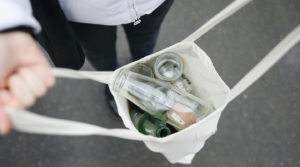Many producers promote the fact that their packaging is lighter than glass to make extraordinary claims about its environmental performance. But Lucy Siegle highlights in a recent article for The Observer that lighter doesn’t always mean better, ‘PET plastic jars produce five times more greenhouse gas emissions than glass.’ They also use twice as much non-renewable material such as minerals and fossil fuels, and 17 times the amount of water.
Competing materials to glass also ignore the fact that most glass packaging in Europe is produced from recycled glass. All glass can be recycled. Across the continent, glass recycling rates average 71% with rates above 90% achieved in some countries. That saves around 7 million tonnes of CO2 each year – equivalent to taking 4 million cars off the road. Recycling just one bottle saves enough energy to power your television for 20 minutes.
By contrast, many packaging materials cannot be recycled at all. Instead they are burnt in incinerators. A 2011 report by Chloé Hecketsweiler found that just 20% of plastic containers sold in France find their way to recycling centres. Of the rest, many find their way into the world’s oceans and waterways where they have a devastating effect on fish, and on the birds and animals which rely on marine life for food.
Another area where glass packaging outperforms all other materials is health. Glass is made from three natural ingredients which are found abundantly in nature: sand; soda ash; and limestone. By contrast, other packaging materials contain oils and chemicals which can affect the contents of the packaging.
We’re flattered packaging manufacturers want to imitate us, but ultimately nothing can replace natural glass. After all, it’s good for the economy, good to the environment, and good for you!





